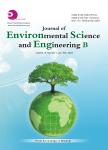Heavy Metal Contamination of Well Water in the Kipushi Mining Town (Democratic Republic of Congo)
Heavy Metal Contamination of Well Water in the Kipushi Mining Town (Democratic Republic of Congo)作者机构:Department of Chemistry Faculty of Science Lubumbashi University Lubumbashi 1825 Democratic Republic of Congo Department of Geology Faculty of Science Lubumbashi University Lubumbashi 1825 Democratic Republic of Congo
出 版 物:《Journal of Environmental Science and Engineering(B)》 (环境科学与工程(B))
年 卷 期:2015年第4卷第8期
页 面:403-418页
学科分类:12[管理学] 1204[管理学-公共管理] 082803[工学-农业生物环境与能源工程] 081505[工学-港口、海岸及近海工程] 08[工学] 0828[工学-农业工程] 0815[工学-水利工程] 120405[管理学-土地资源管理]
主 题:Heavy metals pH drinking water well water WHO guidelines Kipushi.
摘 要:Concentrations of eleven heavy metals (AI, Cd, Co, Cu, Cr, Fe, Mn, Mo, Ni, Pb and Zn) and pH determination in water from nine spade-sunk wells of 2-15 meter depth, five drilled wells of 30-72 meter depth, and two water supply faucets in the Kipushi mining town, south-east of the Democratic Republic of Congo, were investigated from February to July 2011. The results were compared with the World Health Organization (WHO) drinking water pH and heavy metal guidelines. Mean concentrations of Pb in water from four spade-sunk wells and three drilled wells, those of A1 and Fe in water from four and two spade-sunk wells, and those of Cd in water from four drilled wells were higher than the WHO drinking water maximum permissible contaminant limits of 0.01 mg/L, 0.2 mg/L, 0.3 mg/L and 0.003 mg/L respectively, probably due to the mining activities carried out in Kipushi for about 90 years. The pH mean values of water from five spade-sunk wells and three drilled wells were lower than the WHO drinking water pH optimum of 6.5-9.5, suggesting that the water from those eight wells was not conform to the chemical quality of water for human consumption.



